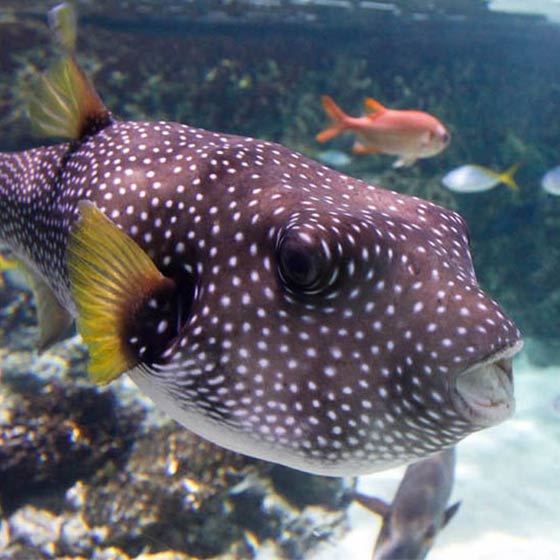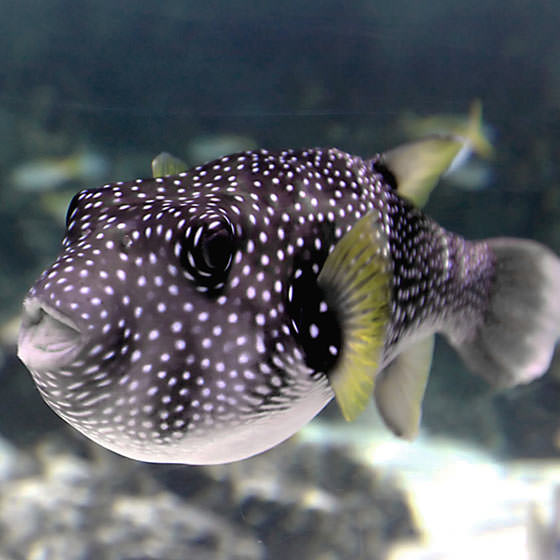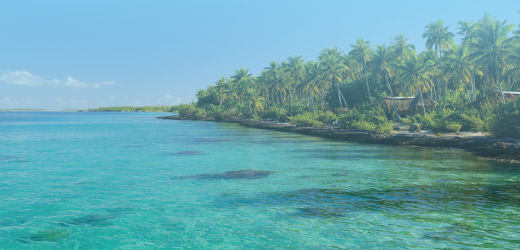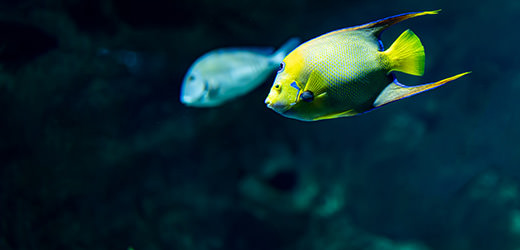Biology
The white-spotted puffer is found on mixed seabeds (of coral, sand, detritus and sea grass) in estuaries, lakes and coastal reefs, between 1 and 50 m below the surface.
Its juveniles prefer shallow lagoons with underwater sea grass. The white-spotted puffer has a highly varied diet: algae, molluscs, sea stars, sponges, tunicates, coral, anemones, crabs, tubeworms and also detritus.
To reproduce, the male builds a nest in the sand where the female lays her eggs.




